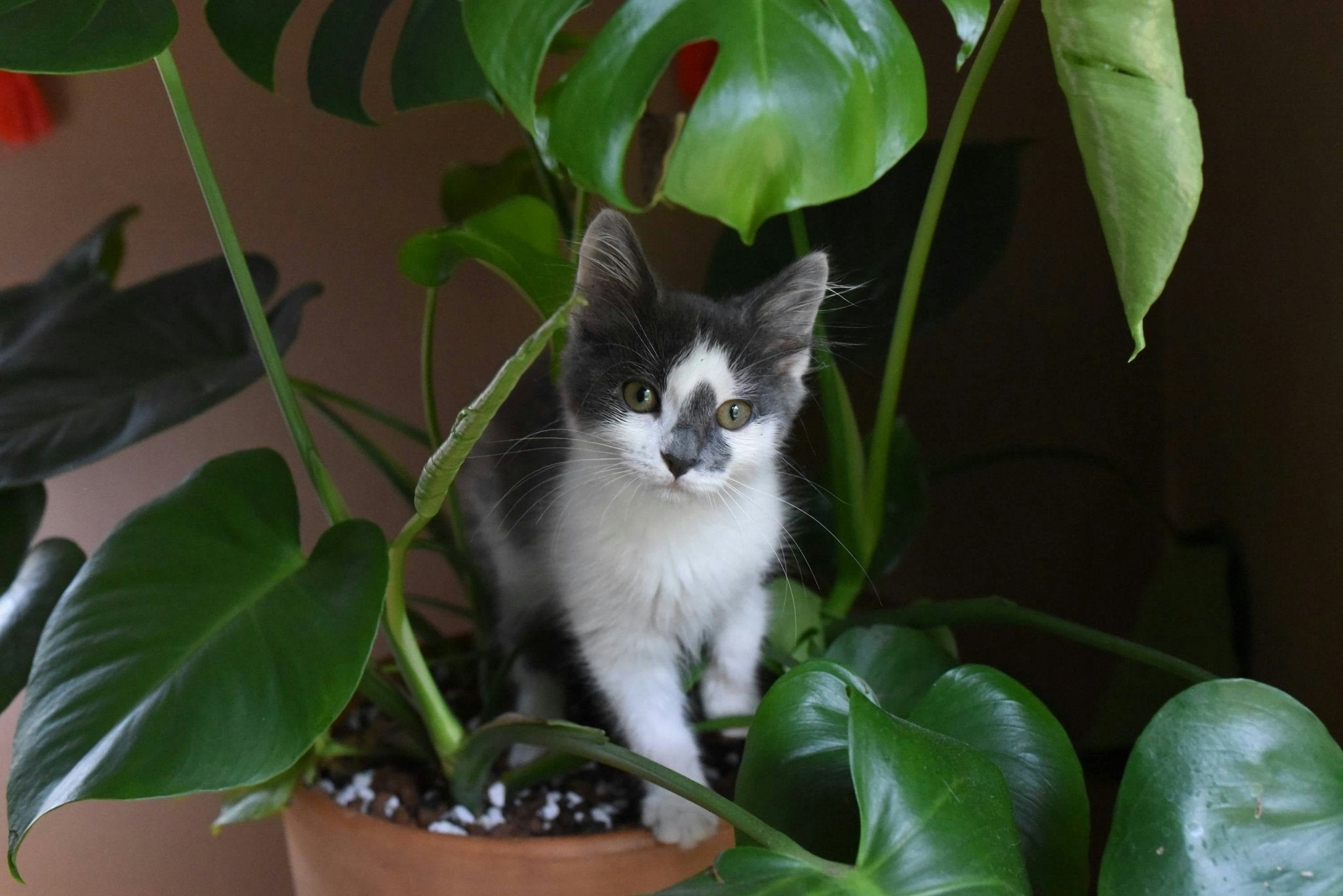As a plant lover and pet lover, it's important to know which houseplants can be poisonous. Some popular houseplants can be harmful or even fatal to your pets. Below is a list of some of the most toxic houseplants to animals.
Poisonous Houseplants for Animals and Their Dangers
The plants below are toxic to both cats and dogs.
Anthurium (Anthurium andraeanum)
Contains calcium oxalates, which causes mouth irritation, excessive salivation, and difficulty swallowing.
Philodendron
Contains calcium oxalates, which causes mouth irritation, vomiting, and difficulty swallowing.
Dieffenbachia
Contains calcium oxalates, which causes mouth irritation, swelling of the tongue, and vomiting.
Spathiphyllum (Spring Lily)
Contains calcium oxalates, which causes mouth irritation, vomiting, and difficulty swallowing.
Caladium
Contains calcium oxalates, which causes mouth irritation, vomiting, and difficulty swallowing.
Ficus (Ficus benjamina)
Contains sap which causes skin irritation, vomiting, and diarrhea.
Oleander (Nerium oleander)
Contains cardiac glycosides, which causes vomiting, diarrhea, and cardiac arrhythmias.
Azalea (Rhododendron)
Contains grayanotoxins, which cause vomiting, diarrhea, and weakness.
Clivia (Clivia miniata)
Contains lycorine, which causes vomiting, diarrhea, and salivation.
Pothos (Epipremnum aureum)
Contains calcium oxalates, which causes mouth irritation, vomiting, and difficulty swallowing.
Cyclamen
Contains saponins, which cause vomiting, diarrhea, and heart rhythm disturbances.
Amaryllis
Contains lycorine, which causes vomiting, diarrhea, and abdominal pain.
Alocasia
Contains calcium oxalates, which causes mouth irritation, vomiting, and difficulty swallowing.
Kalanchoe
Contains bufadienolides, which causes vomiting, diarrhea, and heart rhythm disturbances.
Croton (Codiaeum variegatum)
Contains diterpenoids, which causes skin irritation, vomiting, and diarrhea.
Schefflera
Contains calcium oxalates, which causes mouth irritation, vomiting, and difficulty swallowing.
Monstera (Monstera deliciosa, hole plant)
Contains calcium oxalates, which causes mouth irritation, vomiting, and difficulty swallowing.
Peace Lily (Spathiphyllum spp.)
Contains calcium oxalates, which causes mouth irritation, vomiting, and difficulty swallowing.
ZZ Plant (Zamioculcas zamiifolia)
Contains calcium oxalates, which causes mouth irritation, vomiting, and difficulty swallowing.
Sansevieria (Snake plant)
Contains saponins, which causes nausea, vomiting, and diarrhea.
Strelitzia
mainly tannins and hydrogen cyanide and can cause, among other things, vomiting, diarrhea, excessive drooling and listlessness or weakness.
An ecosystem of The Green Bottle Garden It's completely sealed. This means your dog or cat can't get to it, making it extra safe for pet owners. Indoor plants can sometimes be harmful to animals if ingested. A glass ecosystem prevents this problem, making it ideal for any interior where pets are present.
While some plants, such as orchids and bromeliads , are generally safe, others—such as anthuriums and certain types of bonsai —can be harmful to cats and dogs. Therefore, it's important to always be mindful of the plants you bring into your home.
An added benefit of The Green Bottle Garden 's terrariums and plant arrangements is that they are placed in a sturdy glass vase . This not only protects the plants but also keeps them out of reach of pets.
Our goal is to provide plants that are not only beautiful but also as safe as possible for your environment. This way, you can enjoy greenery in your home without worrying, and without risk to your pets.
Jonathan, Botanist at The Green Bottle Garden

Share:
Anthurium Care | Tips for a Healthy and Long-Lasting Flamingo Plant
Bromeliad Care Tips | The Green Bottle Garden